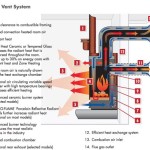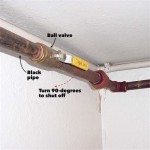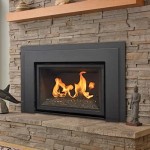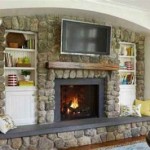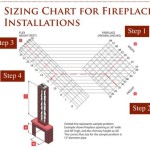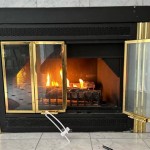Best Wood Burning Fireplace Heater: A Comprehensive Guide
Wood-burning fireplaces have long been a source of warmth, ambiance, and visual appeal in homes. Beyond their aesthetic value, many modern wood-burning fireplaces are designed to provide significant heating capabilities. Choosing the best wood-burning fireplace heater involves considering several factors, including heating efficiency, firebox size, emission standards, and overall design. This article aims to provide a comprehensive guide to understanding wood-burning fireplace heaters and selecting the optimal unit for a particular heating need.
The term "wood-burning fireplace heater" often refers to either a traditional masonry fireplace with enhanced heating features or a freestanding wood-burning stove designed to be installed within a fireplace opening. While both offer the charm of a wood-burning fire, their performance characteristics and suitability for various heating needs differ. Understanding these differences is crucial for making an informed purchasing decision.
Traditional masonry fireplaces, while aesthetically pleasing, are notoriously inefficient heaters. A significant portion of the heat generated by the fire escapes up the chimney. Modern advancements, such as fireplace inserts and improved damper systems, aim to mitigate this inefficiency. Fireplace inserts are essentially self-contained wood stoves that slide into an existing fireplace opening, providing a more controlled and efficient burn. These inserts typically feature a sealed firebox, which allows for better regulation of airflow and combustion, resulting in higher heat output and lower emissions.
Freestanding wood-burning stoves designed for fireplace installation offer a similar solution to fireplace inserts. These stoves are placed within the existing fireplace opening, often requiring modifications to the hearth and chimney connection. They typically offer higher heating efficiency than traditional masonry fireplaces and can be a more cost-effective alternative to a full fireplace insert. Factors to consider when choosing between a fireplace insert and a freestanding stove include the size and configuration of the existing fireplace opening, the desired heating output, and the budget.
Understanding Heating Efficiency and Heat Output
The heating efficiency of a wood-burning fireplace heater is a critical factor in determining its effectiveness in warming a space. Heating efficiency is typically expressed as a percentage, indicating the proportion of the wood's energy that is converted into usable heat. Traditional open fireplaces often have efficiencies as low as 10-20%, meaning that a significant amount of heat is lost up the chimney. Modern wood stoves and fireplace inserts, on the other hand, can achieve efficiencies of 70-80% or even higher.
Higher heating efficiency translates to lower wood consumption and reduced emissions. A more efficient fireplace heater requires less wood to produce the same amount of heat, leading to cost savings and a smaller environmental footprint. Look for models that are EPA-certified, as these units have been tested and proven to meet stringent emission standards and demonstrate high heating efficiency.
Heat output is typically measured in British Thermal Units (BTUs) per hour. The required BTU output of a fireplace heater depends on the size of the space to be heated, the insulation levels of the building, and the local climate. A general rule of thumb is that 5,000 to 10,000 BTUs are needed for every 500 square feet of living space in a moderately insulated home. However, this is just an estimate, and it is always best to consult with a qualified HVAC professional to determine the appropriate BTU output for a specific application.
Another important consideration is the firebox size. A larger firebox allows for longer burn times and the ability to load larger pieces of wood, reducing the frequency of refueling. However, a larger firebox may also require more wood to maintain a consistent fire. The ideal firebox size depends on individual heating needs and preferences.
EPA Certification and Emission Standards
Environmental Protection Agency (EPA) certification is a crucial factor to consider when selecting a wood-burning fireplace heater. The EPA sets emission standards for wood-burning appliances to regulate the amount of particulate matter released into the atmosphere. EPA-certified stoves and inserts burn wood more cleanly and efficiently, reducing air pollution and improving air quality.
Wood-burning stoves and fireplace inserts that meet EPA standards typically feature advanced combustion technologies, such as secondary air injection and catalytic combustors. Secondary air injection introduces preheated air into the firebox, promoting more complete combustion of the wood gases and reducing the amount of smoke released. Catalytic combustors use a catalyst to further burn off unburned gases and particulate matter, resulting in even cleaner emissions.
Some states and municipalities offer tax credits or rebates for the purchase of EPA-certified wood-burning stoves and fireplace inserts. These incentives can help offset the initial cost of the appliance and encourage the adoption of cleaner-burning heating technologies. It is important to check local regulations and incentive programs before making a purchase.
In addition to reducing air pollution, EPA-certified stoves and inserts also tend to be more efficient heaters. The advanced combustion technologies used in these appliances allow for more complete combustion of the wood, extracting more heat from the same amount of fuel. This translates to lower wood consumption and reduced heating costs.
Design and Installation Considerations
The design of a wood-burning fireplace heater is important for both aesthetic and functional reasons. Wood stoves and fireplace inserts are available in a wide range of styles, from traditional cast iron models to contemporary steel designs. Choose a model that complements the existing décor of the home and fits seamlessly into the fireplace opening.
Installation of a wood-burning fireplace heater should always be performed by a qualified professional. Proper installation is essential for ensuring safe and efficient operation and for complying with local building codes. A professional installer will be able to assess the existing chimney and make any necessary modifications to ensure proper venting. Improper installation can lead to dangerous situations, such as carbon monoxide poisoning or chimney fires.
Before installing a wood-burning fireplace heater, it is important to inspect the existing chimney for any damage or defects. Cracks, leaks, or obstructions in the chimney can compromise its ability to safely vent exhaust gases. A professional chimney sweep can perform a thorough inspection and recommend any necessary repairs or cleaning.
The type of chimney liner is also an important consideration. Metal chimney liners are typically required for wood-burning stoves and fireplace inserts to ensure proper venting and to protect the masonry chimney from corrosion. The type of metal liner required depends on the type of fuel being burned and the design of the appliance. A professional installer will be able to determine the appropriate type of liner for a specific application.
Clearance requirements around the wood-burning fireplace heater must also be observed. These requirements specify the minimum distance that combustible materials must be kept away from the appliance to prevent fires. Clearance requirements vary depending on the model of the stove or insert and the type of combustible materials involved. Consult the manufacturer's instructions and local building codes for specific clearance requirements.
Maintaining a wood-burning fireplace heater is essential for ensuring its longevity and performance. Regular cleaning of the firebox and chimney is necessary to remove creosote buildup. Creosote is a highly flammable substance that can accumulate in the chimney and pose a fire hazard. The frequency of chimney cleaning depends on the amount of wood burned and the type of wood used. A professional chimney sweep can perform a thorough cleaning and inspection of the chimney.
Choosing the right type of wood is also important for optimal performance and reduced emissions. Seasoned hardwood, such as oak, maple, or ash, burns hotter and cleaner than softwood, such as pine or fir. Seasoned wood has a lower moisture content, resulting in more efficient combustion and less smoke. Avoid burning treated wood, painted wood, or other materials that can release harmful toxins into the air.
In summary, selecting the best wood-burning fireplace heater requires careful consideration of various factors, including heating efficiency, emission standards, design, and installation requirements. By understanding these factors and consulting with qualified professionals, homeowners can choose a wood-burning fireplace heater that provides warmth, ambiance, and years of reliable service.

The Best Wood Burning Fireplace Inserts Or Stoves Ecohome

Freestanding Wood Burning Stoves Sierra Hearth And Home

5 Best Wood Burning Stoves 2024 How To Choose Stove

Wood Stove Installation Cost In 2024 Forbes Home

Best Wood Stoves For Heating Your Home The Depot

7 Best Wood Stoves In 2024 Our Top Picks

The Ultimate Wood Stove Buyer S Guide Capo Fireside

Cleanest Burning Most Efficient Wood Stoves In The World Mountain Home Center

The Best Wood Stoves In 2024 Domino

Modern Wood Stove Guide All You Need To Know 2024 Field Mag
Related Posts

